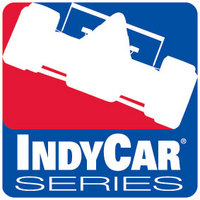INDYCAR SERIES LOOKS BACK AT ONE YEAR OF UNIFICATION
 |
INDIANAPOLIS, February 16, 2009: - “We are unified.” Those three words were uttered on Feb. 22, 2008 and changed the landscape of open-wheel racing in the United States.
While positives would be far-reaching, a multitude of tasks were immediate and imperative. Between the signing of the agreement Feb. 22 and the official news conference five days later during an Open Test at Homestead-Miami Speedway, mobilization of materials and paperwork necessary for former Champ Car teams to compete in the 2008 IndyCar Series campaign began in earnest.
“Everyone recognized that unification was the single most important thing that needed to happen to lay the foundation for the future growth of open-wheel racing,” said Brian Barnhart, president of competition and operations for the Indy Racing League.
The process wasn’t without logistical headaches but drivers, owners, manufacturers, sponsors and league officials put their heads down and worked non-stop with the season quickly approaching and 25 cars were on the starting grid for the highly-anticipated opening race.
“There was plenty of opportunity to have not lived up to anyone’s expectations,” said Tony George, the Indy Racing League’s founder and chief executive officer. “Given the late opportunity, there was a tremendous amount of challenge to be overcome. But everyone pulled together and made sure that the equipment was in the hands of the teams so they could go about their business.
“After we got through the first couple of races, it was always my feeling that by Indianapolis we would really start to come together, and I think we did. Getting to Indianapolis, you had a couple of weeks of practice and four days of qualifying and then a 500-mile race with the big stage and the spotlight on everybody. I think it kind of settled everyone and that’s when we started coming together as one.”
“One series, all the stars” was more than a moniker applied to the new face of the IndyCar Series. Certainly, the competition level increased with the infusion of numerous talented drivers, while personalities emerged to become instant fan favorites and capture attention.
That was driven home the second week of the season at St. Petersburg when 19-year-old Graham Rahal became the youngest race winner in IndyCar Series history. Two weeks later, Danica Patrick provided another historic moment by becoming the first female winner of a major closed-circuit auto racing event.
Overall, there were five first-time winners, two rookies posting their first victories and a series record-tying nine winners in the 17 races. Thirteen drivers earned a podium finish and 21 recorded a top-five finish.
Scott Dixon prevailed in the championship chase by a scant 17 points over Helio Castroneves punctuated by the second-closest finish in series history (Castroneves edging Dixon by 0.0033 of a second) in the final race after Dixon held a 78-point lead in the championship standings with three races remaining.
“When you look at the competitive nature on the racetrack, it just shows you the depth of the field and the quality of teams and drivers that are now in a unified open-wheel series,” Barnhart said.
That was no easy task as the series welcomed teams, got them up to speed on procedures and operations and familiarized them with the IndyCar Series equipment and the venues run at.
“A lot of those transition teams were very good teams anyway, and it didn’t take them too long to be competitive,” said Dan Wheldon, a two-time race winner in ’08 and the 2005 IndyCar Series champion. “I just expect another competitive season, which the IndyCar Series always seems to produce.”
Off the race trackunification contributed to impressive numbers as well withstronger at-track attendance (12 of 16 events on the 2008 schedule where the IndyCar Series raced in 2007 were up according to media estimates), increased television ratings (an 11% increase in average viewership from the previous season across ABC/ESPN/ESPN2), a dramatic increase in merchandise sales (at-track merchandise sales were up 25%), a surge in IndyCar.com visitors (a 33% increase to more than nine million) and several new corporate partnerships( PEAK Motor Oli, Coca-Cola and IZOD).
Each event on the 2008 IndyCar Series schedule featured an event entitlement, minus the Indy 500, and teams saw an increase in sponsorship interest and participation. Unification was the galvanizing factor in many of the increases and opportunities, which will continue to unfold.
“I think unification was a long time coming, but it’s now behind us and we have a very deep and competitive field of cars,” George said. “We’re all looking forward to this next season. There will be some challenges pulling things together, but we’ve been through the biggest challenge and I think that was pulling it together at all.”
When you consider that the series was six weeks away from its first race when unification was announced one could say that the 2009 IndyCar Series campaign – with everyone on a more equal field of competition from the start—will be the true first season of unification.
***
The 2009 IndyCar Series season opens April 5 with the Honda Grand Prix of St. Petersburg on the streets of St. Petersburg, Fla. The race will be telecast live at 2 p.m. (EDT) by VERSUS. The 2009 Firestone Indy Lights season begins with a doubleheader race weekend April 4-5 at St. Petersburg.


